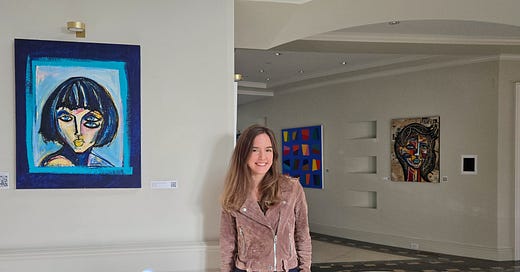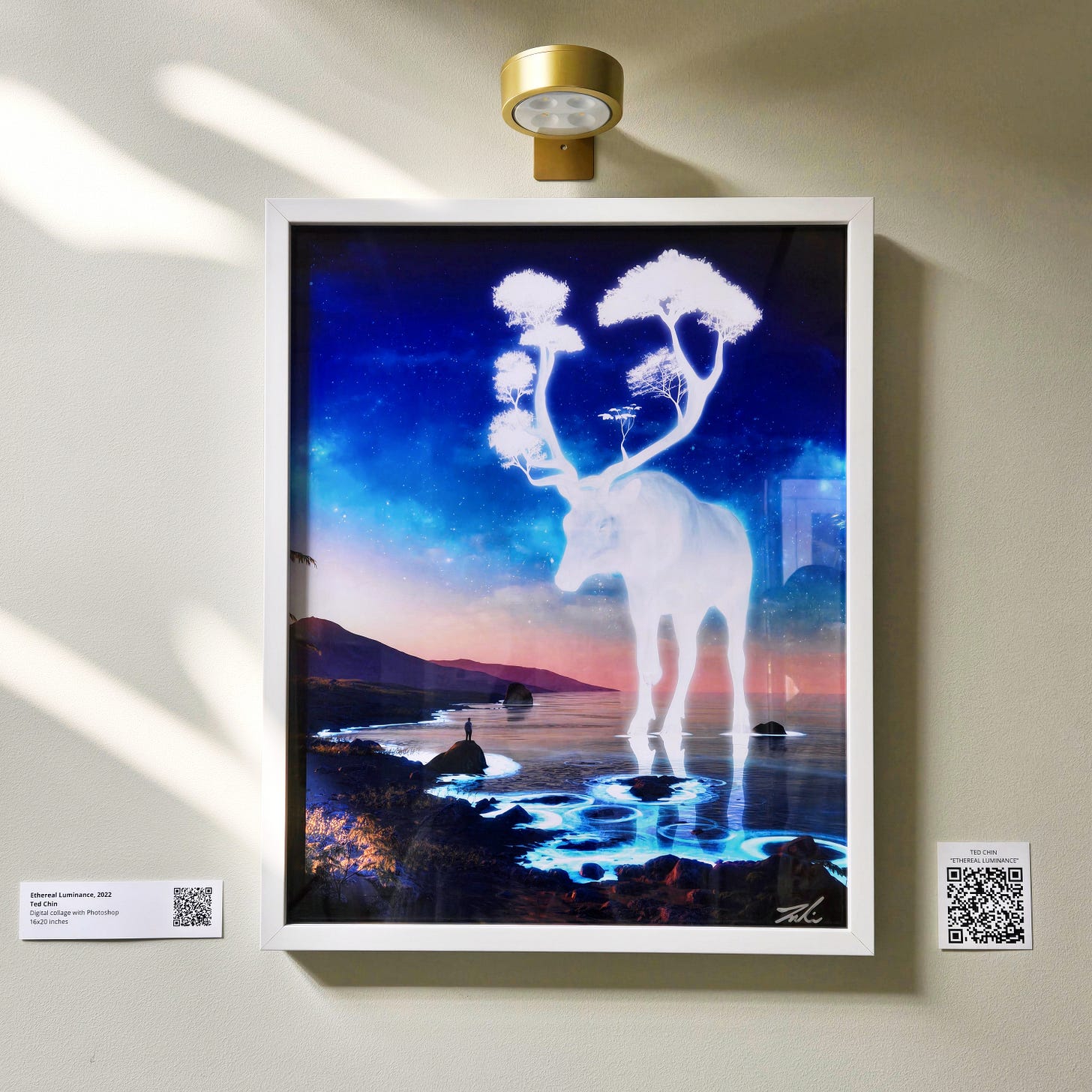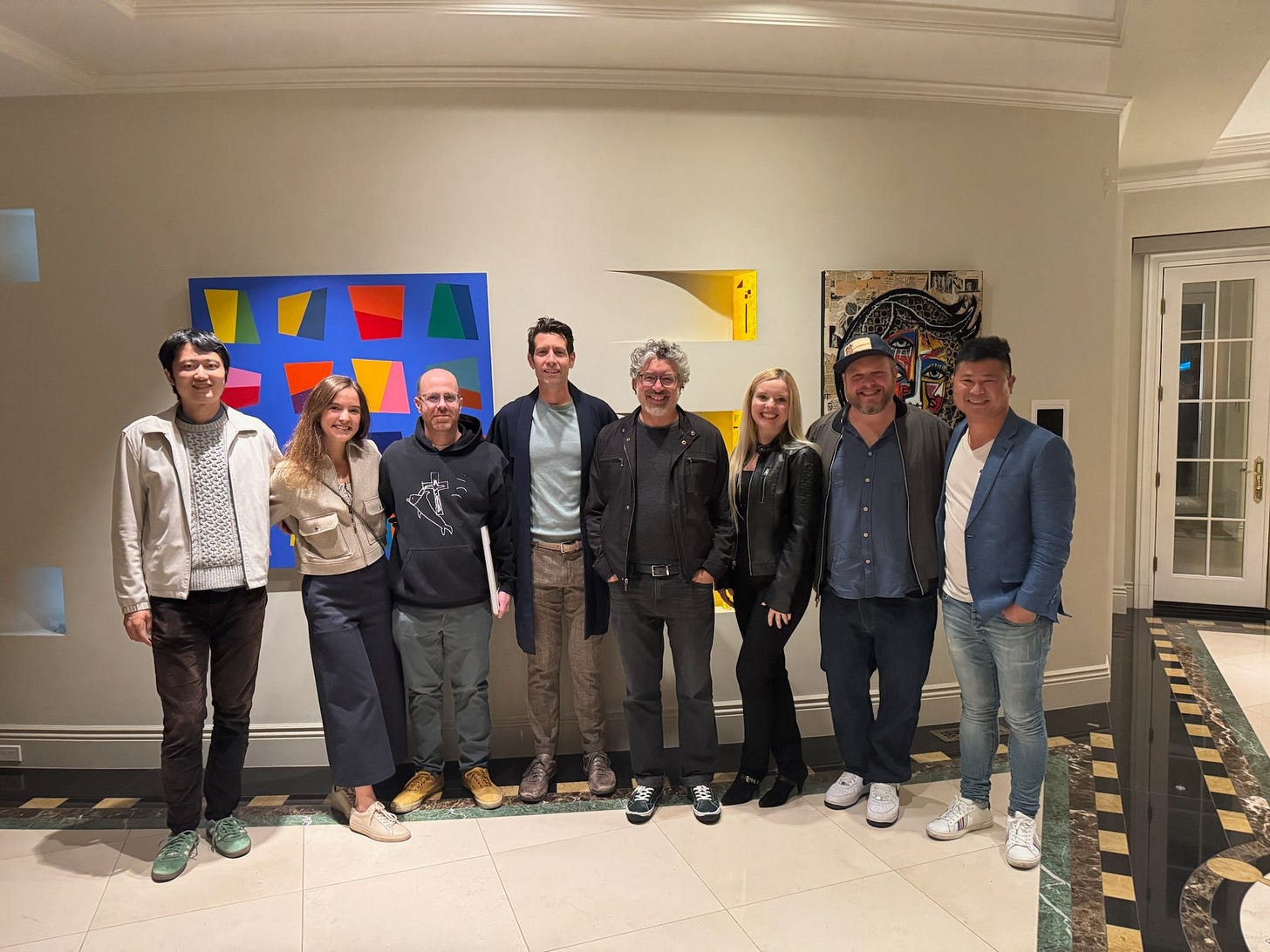Art Meets Algorithms: Inside AGI House's Revolutionary AI-Powered Exhibition
How an art curator and her AI assistant are transforming Silicon Valley's approach to creativity.
If you work in AI in Silicon Valley, you've likely heard of AGI House. Even before the AI boom hit San Francisco, this place had already earned its legendary status. The roster of visitors reads like a who's who of tech luminaries - from Sergey Brin and Eric Schmidt to the founders of OpenAI and Anthropic. For AI entrepreneurs, getting a chance to participate in events here or becoming a resident is highly coveted. Yet my first real venture into AGI House wasn't for an AI hackathon or tech talk - it was for their first-ever AI art exhibition.
I learned about the show through a colleague who met Sofie Bukovska, Creative Art Director of AGI House, also the show’s lead curator, during a16z's tech week. "You really should go see it," my colleague insisted. "It sounds fascinating." That's how I found myself being welcomed by Sofie at AGI House's grand entrance on a sunny weekday afternoon.
The spacious hallways had been transformed into an art gallery, with vibrant paintings and Handicrafts adorning both walls, alongside innovative light installations. The exhibition, titled "Think Slow, Think Deep" was inspired by one of AGI House's recent hackathons of the same name - a fitting theme that invited visitors to reflect on the deeper, slower thinking that often balances the fast-paced world of technology.
Sofie brings a unique perspective to this venture. She was among the first residents when AGI House was just forming, witnessing its evolution into an increasingly influential tech hub. Her background spans both art and technology - from managing art collections at Prague Castle to studying communication, art and entrepreneurship at UC Berkeley. "For me, it was important to bridge these two worlds," she explained. "The Bay Area gives you this unique opportunity to merge technology, business, and art."
What sets this exhibition apart is its innovative approach to AI integration. Each artwork featured a QR code that enabled conversations with an AI version of the artist. I watched as Ted Chin, one of the featured artists, scanned his own QR code and had a fascinating dialogue with his digital twin about his creative process.
Far from being just a novelty, this AI interaction feature enriches the art viewing experience and creates lasting connections between artworks and their admirers. If someone purchases an artwork, Sofie explained, they gain permanent access to these AI conversations, allowing collectors to learn about the piece's story and the artist's inspiration at any time.
The exhibition showcased works from seven established Bay Area artists, including Pablo Manga, Ted Chin, Gabe Weis, Tatiana Gulenkina, Brett Amory, and David Otis Johnson. But what made this show truly unique was how AI was involved from the very beginning. Sofie and her partners created their own AI model - the "AGI House Curator" - to help with artwork selection and placement. "We collaboratively selected the pieces. I would present artworks to the AI curator, and we would discuss how well they matched our criteria of creativity and human touch."
Through her experience in the tech community, Sofie has discovered an unexpected appetite for art among tech leaders. "Many founders I've met are actually very interested in investing in art and attending art events," she shared. This observation helped shape the exhibition's educational approach, designed to make art more accessible and engaging for tech-focused individuals while maintaining its intellectual depth.
The artists' enthusiastic embrace of AI emerged as another notable aspect of the show. Rather than viewing it as a threat, many see it as a collaborative tool. Some, like Brett Amory, already work closely with AI in their creative process. "None of them has a negative attitude towards AI," Sofie observed. "They're rather optimistic about collaboration opportunities."
The opening night drew around 40 carefully selected guests, including gallery owners, venture capitalists, and tech founders. While the artworks were available for purchase, Sofie emphasized that the focus wasn't on sales but on fostering connection and understanding between Silicon Valley's technical and creative communities.
This fusion of art and technology proves particularly fitting for AGI House, a space dedicated to accelerating humanity's transition to artificial general intelligence. As Sofie noted, "We want to accumulate creativity here. When there isn't a hackathon happening, the art gives people a reason to stop by, engage, and be inspired."
The exhibition, which concluded a month ago, marked an innovative first step in bridging Silicon Valley's technical and creative communities. Looking ahead, Sofie envisions rotating exhibitions and incorporating more digital and AI-generated artwork that symbolizes the transition to AGI.
In a place where conversations typically revolve around code and algorithms, Sofie Bukovska has shown there's room for both technological innovation and artistic expression to flourish together. The tech community eagerly anticipates her next ventures at this unique intersection of human creativity and artificial intelligence.









